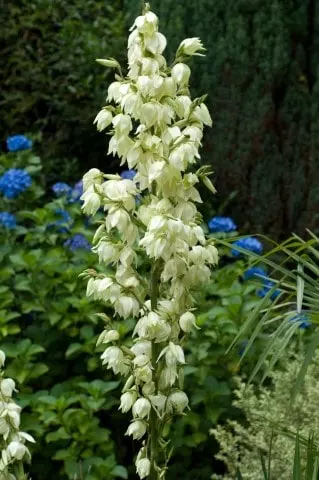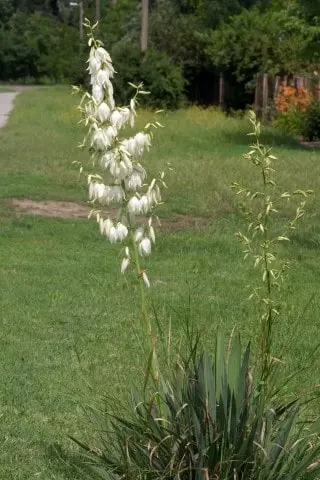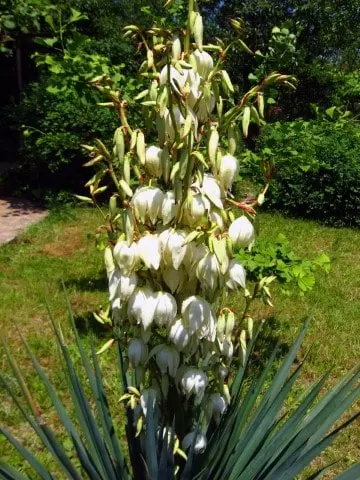Since we were very young, we were taught that it was very significant to know about all the patrimonial symbols that constitute the essence and the heart of a country because that filled our being with pride, that is why today we are going to tell you which is the national flower of El Salvador.
The National flower of El Salvador is known by the name “Flor de Izote” (“Flor” in Spanish means “Flower”), although it is very popular in any part of the region, this plant is not native to the country, it can also be found in regions of other Central American countries, where it is recognized by the name of Izote flower.
Table of Contents
El Salvador National Flower: How Is It Cultivated, and What Is the Appearance of El Salvador Flower?
El Salvador Flower, the Izote flower can grow naturally, but it can also be easily cultivated in indoor gardens or pots, although it is best to do it outside because its size is that of a not very large shrub; to do this it is necessary to have at hand one of its vines or a small bouquet of the same plant.
The Izote flower stands out for being part of the family of plants known by the name of liliaceous, generally, they can be easily found in mountainous areas, but they can also bloom on paths near the beach.
Being small shrubs, in outdoor areas can reach about 32 ft (10 meters), its leaves are bright green and intense, its shape is elongated, has several stems with extensive thickness, from which arises its scientific name Yucca elephantipes or as they say informally, elephant foot and its flowers are warm white color.
The national flower of El Salvador can be cultivated in areas where any type of temperature prevails, that is to say, that it blooms in cold climates and warm climates, but as a general rule, the National flower of El Salvador only blooms between April and May.

El Salvador National Flower: What Are the Uses and Properties of The Izote Flower?
El Salvador flower has a lot of properties that, apart from turning it into a patriotic symbol, play an important role in the development of the Salvadoran country, due to all the functions it fulfills within this small nation.
Of these properties we must mention its high proportions of vitamin C, local people usually eat it boiled, with eggs, tomato, soups, and even salads.
El Salvador National Flower is also considered an important ingredient in the gastronomy of El Salvador.
Other nutritional values that this flower of El Salvador has, apart from vitamin C, is the presence of iron, phosphorus, and calcium, it also has different properties that serve to purify the body and also act as an anti-inflammatory.
The national flower of El Salvador also participates in a role of interest, because within the economy of the nation, thanks to the various uses that can be taken advantage of, apart from being a rich gastronomic food, in companies engaged in the textile industry, it is used as raw material.
El Salvador National Flower, the Izote flower is also used for the manufacture of some products such as detergents and alcohol, on the other hand, also offers the benefit of being used as the main material for local crafts, its stem is used to make baskets and braids. In addition, because of its beautiful appearance, it is also marketed as a very attractive and beautiful decorative plant.

In What Year Was It Decreed as National Flower of El Salvador?
The National Flower of El Salvador has a primordial part in the cultural scope of all Salvadorans, due to the varied uses that this country has practiced previously with it and that at present continue doing it, therefore, for many, it was already considered the national flower as such, but it was not until the year 1996 when the legislation formalized it utilizing a decree.
El Salvador National Flower, the Izote flower occupies a very important place in the heart of all the inhabitants of this country, thanks to all its nutritional benefits and its beautiful and delicate appearance, in addition to its various uses and also the place it occupies within the economy. We are certain that those who know this flower, have been amazed at the different properties that this flower has, and although they are present in other countries, they do not have the same essence as the Salvadoran ones and that makes them special.
El Salvador National Flower is Toxic to Dogs, Toxic to Cats, Toxic to Horses
El Salvador National Flower is Toxic to Dogs, Toxic to Cats, and Toxic to Horses due to the presence of toxic saponins according to the ASPCA
We hope you enjoy this article about the national flower of El Salvador. We recommend our article about the national flower of Ecuador.


